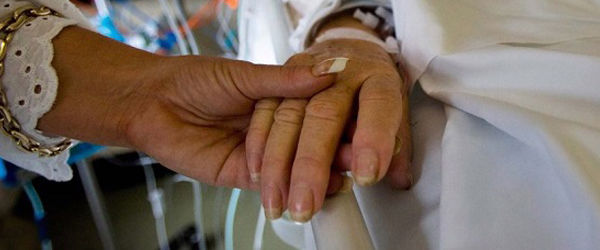That respect is well-deserved. Given secularity's convoluted history, there isn't any one, normative study that traces out its evolution --- but, if there was, Taylor's analysis might apply for the distinction. Deeply versed in history, philosophy, literature, theology and spirituality, Taylor has a deep well within which to dip to make his analysis.
Few scholars, to my mind, bring so wide and deep a scholarship to the area of history and faith. Taylor confesses that he is, personally, a man of faith, but strives insofar as this is possible for anyone, believer or agnostic, to not let his own beliefs color his research. Few commentators, even those critical of the book, accuse him of that. He is generally as objective as the evening news, reporting what happened without either trumpeting or bemoaning it.
And what he traces out is the big story of how we moved historically from a culture and a consciousness within which it was virtually impossible not to be believe in God to the situation within which we find ourselves today: namely, where belief in God is merely one option among others and indeed often not the dominant one.
Until the full-flowering of modernity (and, for many of us personally, that has really just happened in the past two generations) we lived with what Taylor calls a "porous" rather than a "buffered" consciousness. A porous consciousness is more naturally mystical. A buffered consciousness is what Karl Rahner had in mind when he said we would soon reach a time when someone would either be a mystic or a non-believer.
A porous consciousness is porous precisely in its incapacity to protect itself against spirits and angels, demons and superstition, against good religion and bad religion. We don't have to go far back to remember when we used to sign ourselves with the cross and holy water during a lightning storm. The other world, however it was understood, could bring us to our knees. We didn't always like how the supernatural could leak through our defenses, but we were pretty helpless in preventing it.
A buffered consciousness is precisely one that is buffered against angels and demons, against good religion and bad religion, leaking through. Today, rather than being frightened by a lightning storm, we enjoy the free fireworks, feeling quite safe and secure behind our modern glass windows. We are much more buffered against the other world and how it can break through in our consciousness.
This makes secular consciousness (an awareness that, for the most part, doesn't feel any conscious need to connect its existence, sustenance, meaning, and striving for happiness to anything beyond itself and the world) a genuine option for us and makes faith more a choice than a given.
Loss, depression and fear of death can, and do, sometimes shake the secure foundations of our lives and drive us to our knees in helplessness. But love, beauty, hope and joy can also break through our buffered shell and break us open to a meaning beyond what this world has to offer.
But, as Leonard Cohen famously writes: There is a crack in everything. That's how the light gets in. There is too a crack in our buffered, secular consciousness. Taylor calls this “the unquiet frontiers of modernity.”
There are certain things against which we cannot buffer ourselves. Loss, depression and fear of death can, and do, sometimes shake the secure foundations of our lives and drive us to our knees in helplessness.
But we can be driven to our knees for the opposite reasons. Love, beauty, hope and joy can also break through our buffered shell and break us open to a meaning beyond what this world has to offer. There is disquiet and fragility on both frontiers, on those which threaten and frighten us and on those which beckon us towards deeper hopes.
Here's how Taylor puts it: The sense that there is something more presses in. Great numbers of people feel it: in moments of reflection about their life; in moments of relaxation in nature; in moments of bereavement and loss; and quite wildly and unpredictably. Our age is very far from settling in to a comfortable unbelief. Although many individuals do so, and more still seem to on the outside, the unrest continues to surface. Could it ever be otherwise?
The secular age is schizophrenic, or better, deeply cross-pressed. People seem at a safe distance from religion; and yet they are very moved to know that there are dedicated believers, like Mother Teresa. The unbelieving world, well used to disliking Pius XII, was bowled over by John XXIII. A pope just had to sound like a Christian, and many immemorial resistances melted. It's as though many people who don't want to follow a religion want nevertheless to hear the message of Christ, want it to be proclaimed out there.
The paradox was evident in the response to the late Pope John Paul II. Many people were inspired by John Paul's public peripatetic preaching, about love, about world peace, about international economic justice. They are thrilled that these things are being said.
God may not always seem evident in our world, but in our deepest fears and hopes we still have his calling card.
Oblate of Mary Immaculate Father Ronald Rolheiser is a specialist in the field of spirituality and systematic theology. His website is www.ronrolheiser.com.

